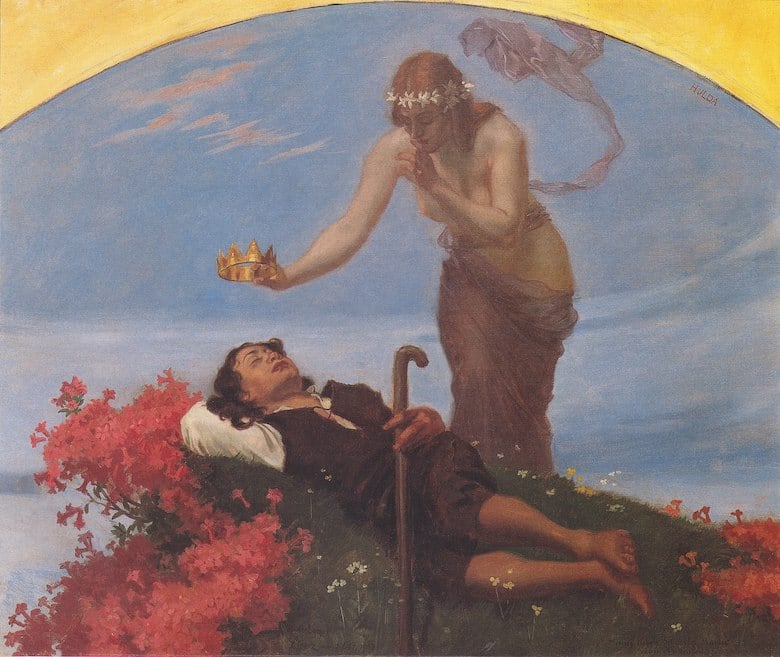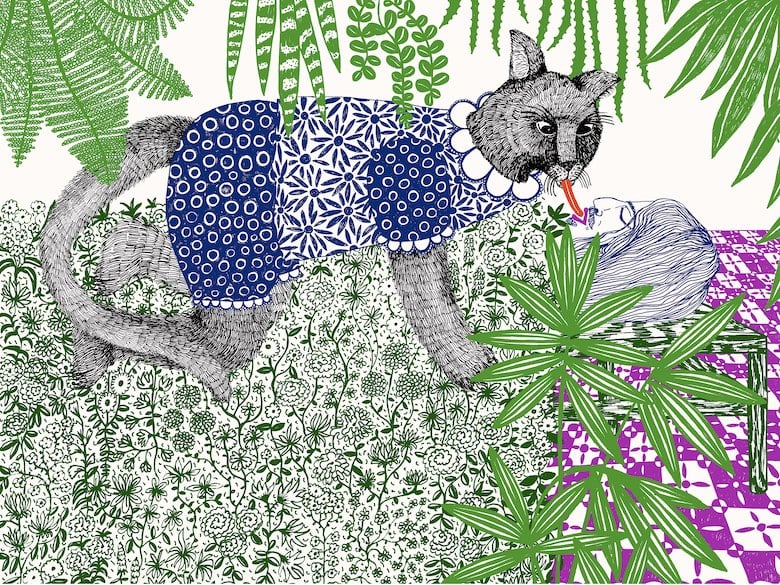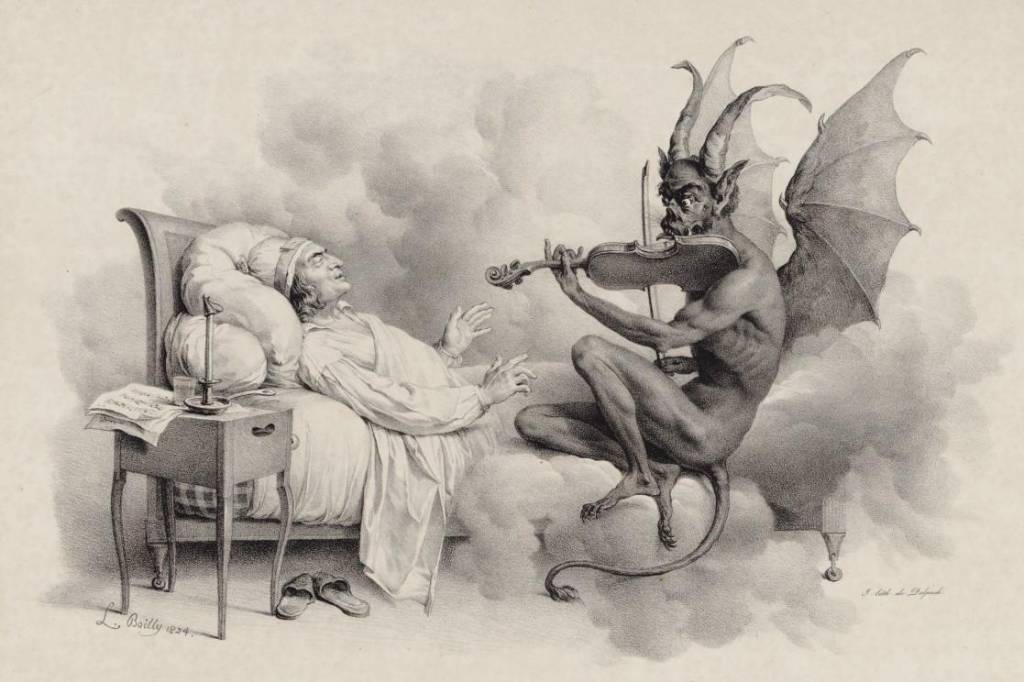Most of us think of nightmares as dark terrors conjured by the subconscious. But what if it’s more? From getting caught in a lion’s jaw to being chased by mysterious creatures, we experience a house of horrors in our dreams. Still, for centuries, a night “mare” was considered a scary intruder, or even a mare demon of sorts from mythology.
The mare does not refer to a female horse but to the mara demon who sits on a person’s chest and terrorizes them in their sleep. According to old Norse folklore, a Mara was an evil nocturnal demon of terror. The Night-hag or “riding witch” are other names for the Nightmare.
The Origins Of Mara Demon: Spirit of Nightmares
The Mara demons were feminine nightmare spirits in Slavic and Teutonic mare mythology. The Slavic words mora, morava, and zmora have their roots in the Greek word moros, which means death. For the Croats, mora means “nightmare,” but it also refers to a succubus, a demonic entity that visited men in their dreams and tormented them with longing. The concept is that these feminine spirits intentionally tangled men’s hair in their sleep to give them “mare-locks,” “mare-braids,” and “mare-tangles.”
Old Norse legend goes that a mara would slither into a bedroom at night, hover on top of a sleeping person, and inflict nightmares. Usually, the victim would become paralyzed when the mare visited and felt a heavy weight starting at the foot but ending on the chest, leaving the victim feeling suffocated, panicked, and breathless.

The belief for centuries was that witches and old hags were the origins of the mares: The Norse Ynglinga saga, penned by Icelandic poet Snorri Sturlson denotes the first appearance of the Mara in the 13th century.
In chapter 16 of the saga, King Vanlande of the Upsal domain dies because of the Finnish sorceress Huld. After waiting for her husband for many years, Queen Driva offers Huld a bribe in exchange for having her curse Vanlande to death or return him to Finland.
In the saga, Valande woke up screaming that the Mara nightmare was trampling him. the demon began its attack by breaking his legs while his bodyguards attempted to shield his head. Then when they strained to save his legs, the mare attacked him on the head and finally slaughtered him.
The practice of witchcraft in Norse mythology may have included bilocation and disguises. Shape-shifting witches took on animal guises to become frogs, horses, cats, dogs, and birds that resembled their assumed ‘familiars’ or witch companions. Chapter 7 of the Ynglingasaga claims that Odin possessed the same skill. According to Lee Hollander’s translation, Odin could change his appearance to appear dead or asleep, but he would then morph into a fish, worm, bird, or other animal and fly off to far-flung countries in a flash.
The Demonic Saga of the Mare Mythology Across European Folklore
The Mara was a dark entity that traveled throughout Europe; she was a demon-induced nightmare known as a martröð in Anglo-Saxon and Icelandic, a mahr in Germany, and so on.
According to American folklorist and historian D. L. Ashliman, the visions the mare caused were often known as “mare rides.”

Ashliman gathered descriptions of the mare demon from around Europe and suggestions from lore for eliminating them. The mare mythology was that they entered through knotholes or keyholes. Therefore, closing these gaps would deter them. Capturing the mare required finding a companion, awaiting its arrival, and sealing the entrance.
The Urban Legend of The Mare Demon
Often mares were considered to be female. In such folkloric tales, a few men could capture a lovely bride, but she always managed to escape when she found the exit. If a mare sat on you, you could try shoving your thumb into its mouth or offering it a gift to return for the next day.
According to a folktale from Denmark, a mara rode a man each night. One day the man planned a trap to capture her and get rid of her forever. He knew that maras could enter through the smallest openings but could not exit once the entrances got sealed. Thus, when daylight arrived, the chamber contained a woman. But since the man was unaware that once you capture a mara, you cannot get rid of her, he had to marry her.
In another myth in Poland and Germany, a märt was supposedly a female with a problematic foot. In one story, a smith had a daughter with a troubling foot in the village of Bork near Stargard, and at that time, many villagers claimed that they were having nightmares of the mare.
The term “holed stones” first appeared in the 15th century when they served as charms to ward off nightmares. Such holed stones were strung on bedposts to stave off demons like the Night-Hag, or a succubus. These were called “hag-stones.”
— FOUNDATIONS OF HORROR —
Further explore these subgenres & tropes. more>>
#Never Sleep Again | #Folk horror | #Monster horror | #Capital M monsters

Summing Up and More Resources About the Mare Demon
Today the belief exists that the mare’s malevolence is actually a form of sleep paralysis. A condition occurring at the threshold of sleep, typically right before or right after awakening. There isn’t a definite cure for sleep paralysis, only mare mythology and charms applied by medieval folk. Many are familiar with Henry Fusili’s The Nightmare, a potent painting that depicts some of these mara imagery.
Perhaps you experienced a nightmare, and you felt yourself falling into darkness. Maybe it terrified you so much you wanted to scream!
Additional Reading:
Heimskringla: History of the Kings of Norway, Chapter 13
Indo-European Roots of mer-
Dreams in Old Norse Literature and their Affinities in Folklore, Kelchner, Georgia Dunham (2013) [1935], pp. 20–22
Main Image: “Tartini’s Dream” by Louis-Léopold Boilly (1761-1845)
Last Updated on January 10, 2023.


9 Comments